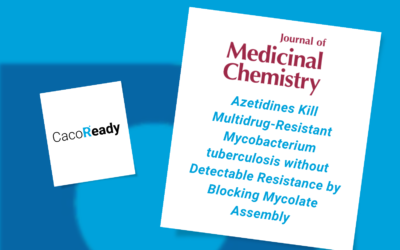Cellular models are the most used in vitro technique for novel drug studies during preclinical drug discovery phases. Cell lines, including Caco-2 cells, provide a pure population of cells, are easy to use, and bypass ethical concerns associated with animals’ use for pharmacokinetics and toxicology assays, while advanced in vitro models successfully predict the drug’s in vivo intestinal absorption through reliable and reproducible results. Overall, they reduce assay costs and help to understand and evaluate the pharmacokinetics of new therapies.
ReadyCell has in its catalog CacoReady, a kit based on Caco-2 cells, suitable for permeability assays. It also offers CacoGoblet, a co-culture of Caco-2 cells with HT-29, which are particular for their mucosal phenotype.
Why are Caco-2 cells used? The gold standard for permeability assays
Caco-2 cells are considered a reference cellular line, mostly indicated for in vitro preclinical evaluation of oral dosage products. These cells are cultured in monolayers, which become differentiated polarized epithelial cells after 21 days, expressing tight junctions, microvilli, intracellular metabolic enzymes, and transmembrane transporters such as BCRP, MDR1, and MRP2. The Caco-2 cell line is widely used in the scientific community as an artificial model equivalent to the intestinal epithelium due to its physical and biochemical characteristics, which are pharmacologically ideal to evaluate ions and molecules’ passage through passive diffusion and/or active transport.
Caco-2 in vitro kits contain these differentiated cells, available in various plate formats, and specifically adapted to the type of assay to carry on. Cultivation of Caco-2 cells on filter inserts (transwells) leads to an improved functional and morphological differentiation, making it the method of choice for most assays. These transwell plates are composed of a semi-porous membrane that allows the formation of confluent monolayers on top, resembling the characteristics of enterocytes (the cells that line the small and large intestine). They also enable access to both the apical and the basolateral side of the cells, emulating the mucosal (lumen) and the intestine’s serosal (blood) surfaces, respectively. Caco-2 cells can further be used to study innumerable topics, including inflammatory triggers and toxicity, which are usually plated under standard insert plates.
What is the Caco-2 cell line in drug discovery?
Caco-2 cells are considered to be the gold standard for in vitro prediction during drug discovery research, aiding the generation of preliminary data for later in vivo drug absorption in:
- Permeation and passive metabolism investigation
- Transmembranal transporter drug uptake evaluation
- Assessment of the toxicity of compounds
- Toxicity study of excipients in formulations
- Establishing test solutions for optimal screening
- Determine formulations containing enhancers of intestinal permeability
Regulatory agencies guidelines recommend Caco-2 in vitro evaluation during preclinical stages of novel oral administered therapies, being mandatory for novel drugs and recommended for phytotherapeutic and nutritional products.
For over a decade, to facilitate and optimize these assays, cell-based ready-to-use kits have been developed and delivered following the standards required in the HealthCare sector.
If you need specific information related to non-clinical in vitro assays and Caco-2 cells, contact ReadyCell through our form or at reagents@readycell.com





